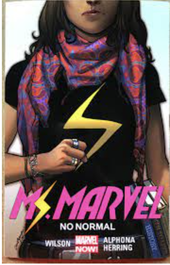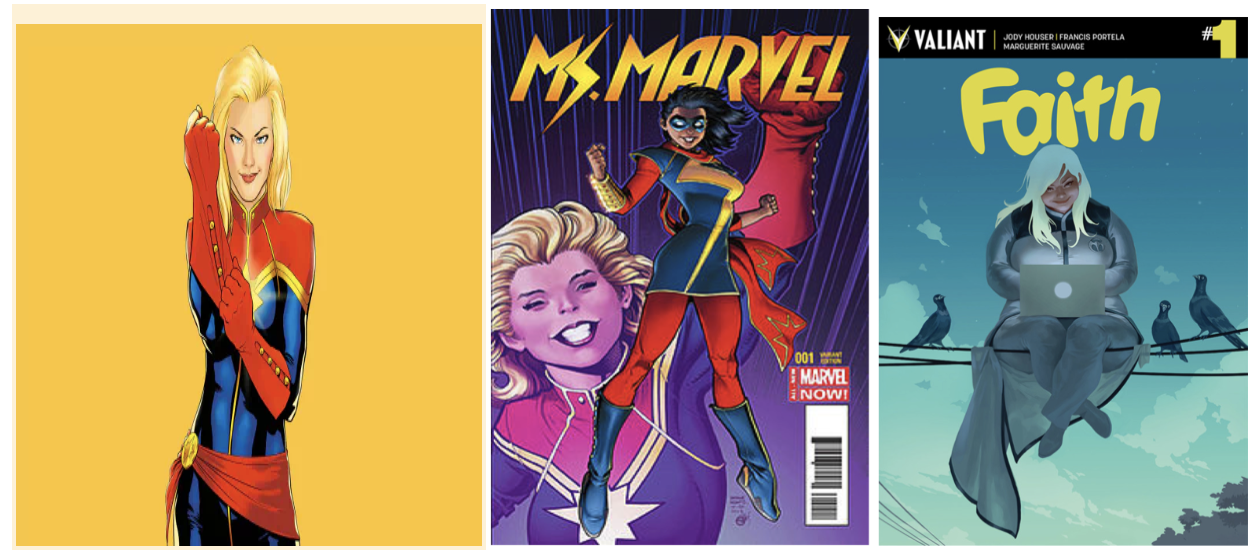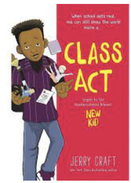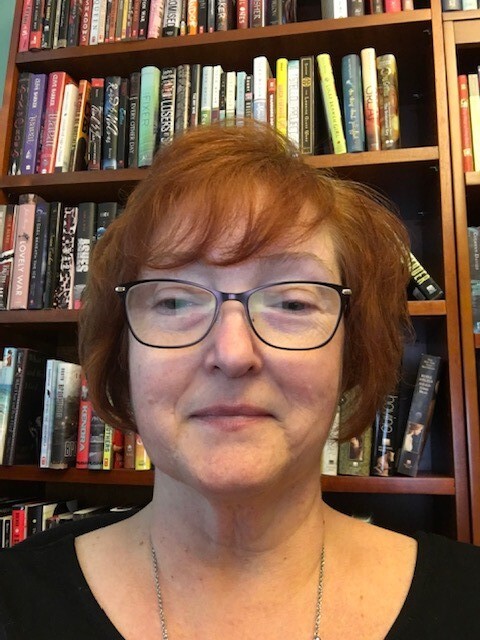
The student predictions have often been on point: it’s about a teenage girl, the main character is strong, she is a person of color, she develops superpowers, she has to balance school and being a superhero, among others. The activity shows students’ ability to interpret visual texts and also to use the predict reading strategy. In addition to the cover of the novel, the students and I have also viewed and discussed these images before starting Ms. Marvel: No Normal:
The skills of critical literacy (Hall, 2012; Morrell, 2002) and critical visual literacy (Schieble, 2014) encourage students to go beyond entertainment with comics and other forms of media and interpret messages about power and the status quo. While these conversations have been within educational circles for a while now, I believe that they are particularly relevant in our current climate, where books are often censored and culture wars are prevalent.
Another book we do similar activities with is Class Act by Jerry Craft, which we read in Humanities toward the beginning of the school year. In addition to looking at a few key panels in the book, I also have students make predictions about the novel’s topics based on the cover:
Book covers and superhero pictures are great examples of using visual literacy to start conversations about media in the classroom, and the examples I describe above apply to other novels and media as well.
References:
Craft, J. (2020). Class Act. HarperCollins.
Hall, L. (2012). How popular culture texts inform and shape students’ discussions of social studies texts. Journal of Adolescent & Adult Literacy. 55(4), 296-305.
Morrell, E. (2002). Toward a critical pedagogy of popular culture: Literacy development among urban youth. Journal of Adolescent & Adult Literacy, 46(1), 72-77.
Wilson, G. Willow, 1982- author. (2014). Ms. Marvel. Vol. 1, No normal. New York, NY: Marvel Worldwide, Inc., a subsidiary of Marvel Entertainment, LLC, 2014.
About the Blogger:
Margaret A. Robbins has a PhD in Language and Literacy Education from The University of Georgia. She is a Teacher-Scholar at The Mount Vernon School in Atlanta, Georgia. She has peer-reviewed journal articles published in The ALAN Review, SIGNAL Journal, Gifted Child Today, Social Studies Research and Practice, and The Qualitative Report. Her research interests include comics, Young Adult literature, fandom, critical pedagogy, and writing instruction.






 RSS Feed
RSS Feed